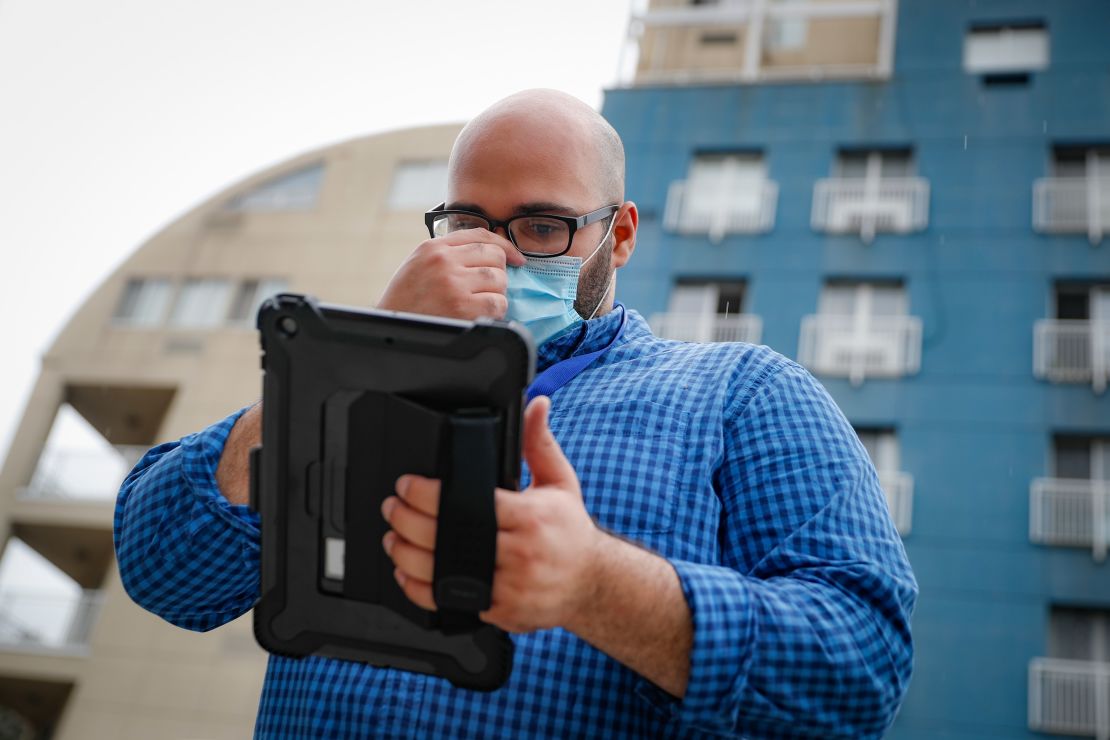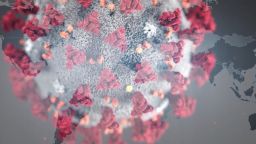Coronavirus has invaded what should be a fortress of safety – and it keeps spreading inside and outside the White House.
“The White House has turned into the epicenter of what is clearly a major outbreak,” emergency medicine physician Dr. Leana Wen said. “And I just cannot believe that at this point we’re not doing the right thing, which is contact tracing.”
Contact tracing is critical to quashing new outbreaks and has slowed or even stopped previous epidemics, such as SARS and Ebola.
But with Covid-19, major obstacles stand in the way – both at the White House and across the country.
Despite more than 7.5 million infections and over 211,000 US deaths, “there’s still no national strategy and no national program” for Covid-19 contact tracing, said Steve Waters, founder and CEO of Contrace.org, which helps link people who want to work as contact tracers with health departments that need them.
“So state and local (health departments have) been left to each come up with their own strategy and their own program. So it’s left the country with a patchwork of strategies, with varying levels of success.”
The need for strong contact tracing has never been as obvious as it is now.
President Donald Trump and more than a dozen people in his circle have been recently infected with coronavirus. A senior administration official said a September 26 White House event likely sparked an outbreak.
The White House said it has completed “all contact tracing” for Covid-19 cases identified at the White House. But a growing number of visitors who recently attended events there have tested positive, including some from different states.
And in the days before Trump was hospitalized with Covid-19, he visited five states in five days. (The incubation period for coronavirus is usually between two and 14 days, and those who get sick tend to be most contagious before they start to show symptoms.)
Despite countless people who may have been exposed to the virus – directly or indirectly from Trump or from an infected staff member – the White House repeatedly declined contact tracing help from the US Centers for Disease Control and Prevention.
“It seems like an absurd thing to do,” Waters said. “This was a moment where Trump could have showed strong support for the CDC and led by example with contact tracing. And it seems that they have chosen the opposite.”
What exactly happens during contact tracing
In contact tracing, “public health staff work with a patient to help them recall everyone with whom they have had close contact during the timeframe while they may have been infectious,” the CDC says.
Those contacts are notified so they can quarantine themselves and prevent further spread. This is extremely important because coronavirus can spread for days without any symptoms.
“A person will typically be told, ‘You may have been exposed. We recommend that you isolate for the next 14 days. Here’s where you can get a test. What questions can I answer for you? Tell me folks that you’ve had sustained, close-proximity with, and together we’ll work to notify these people,’” said David Harvey, executive director of the National Coalition of STD Directors.
Prior to this pandemic, the coalition’s contact tracers focused on sexually transmitted diseases and sometimes got redeployed to fight Zika, Ebola and food-borne illnesses. More than 1,000 contact tracers from the group are currently deployed to fight Covid-19.
When contacts are notified, they aren’t told who was recently diagnosed.
“To protect patient privacy, contacts are only informed that they may have been exposed to a patient with the infection,” the CDC says. “They are not told the identity of the patient who may have exposed them.”
Nationwide, an estimated 60,000 contact tracers – mostly hired by state and local health agencies – are racing to stop the virus, Harvey said.
But that’s not nearly enough. “We believe that 300,000 contact tracers are needed in the United States,” Harvey said.
What happens when cases get out of control
It’s much easier to contact trace when an outbreak is caught early, before the number of contacts soars exponentially. But sometimes, Covid-19 cases multiply much faster than contact tracers can keep up with.
“You don’t do contact tracing in an out-of-control (situation) where the numbers are so overwhelming that it’s not feasible to do,” Harvey said.
“In that kind of situation, you would be doing more of a public education campaign aimed at everybody who attended the event” – like stressing the need for universal mask wearing, getting tested and voluntarily quarantining, he said.
Large events such as rallies and concerts – especially when people are close together without masks – can be breeding grounds for out-of-control outbreaks.
“Rallies are very tough things to do,” Harvey said. “The numbers of people involved in a rally, you would not do necessarily a classic cluster investigation. Instead, you would rely on a mass education effort. So you might email everyone who attended and say, ‘You’ve been possibly exposed. We are recommending that you seek testing and that you voluntarily isolate yourselves for two weeks.’ But there’s no way contact tracers can then call up everybody.”
Some schools and universities have been quickly overwhelmed by outbreaks, sometimes telling wide swaths of students to go home and quarantine or switching entirely to online learning.
But with successful contact tracing, schools can hopefully “try to avoid those blunt measures,” Waters said. Assigned seats in all classrooms and on school buses can help easily identify nearby contacts.

The biggest hurdles in contact tracing
Nationwide, contact tracers face many obstacles while trying to get coronavirus under control.
“We’re not doing very well with contact tracing in the United States. And that’s for several reasons,” Harvey said.
“One, health departments don’t have the money and the resources they need to hire the number of people that are required. Two, It takes a few months to scale up a massive effort like this when we’re also making up for decades of a lack of investment in public health. And three, absent strong national leadership and education campaigns, people aren’t answering the phone from health departments and contact tracers,” Harvey said.
“So these three very large problems are what is driving part of the problem here, and why we still have an out-of-control Covid epidemic.”
Across the country, less than 50% of people whom contact tracers try to reach actually agree to cooperate, Harvey said.
“The reasons that people don’t participate are complicated and serious,” Harvey said. “Some people, they fear government intervening in their lives. For other people, it’s an economic issue. They can’t afford to stay home for two weeks.”
Harvey said he wants to see federal funding “that makes it possible for people to isolate.”
“So income support, sending people to hotels to help them isolate, these are all provisions that are needed as part of contact tracing,” he said.
Indeed, helping people quarantine and isolate would deal a significant blow to this pandemic, said Dr. Mike Ryan, executive director of the World Health Organization’s Health Emergencies Programme.
“If people who were sick stayed at home, and were supported in doing that, and if their contacts stayed at home, and were supported in doing that, we could break the back of this disease,” Ryan said.
Lessons learned from White House infections
A senior Trump administration official said the September 26 event announcing Amy Coney Barrett as the new Supreme Court nominee likely sparked an outbreak.
At least 12 people who attended that event – including Trump himself – would later test positive for coronavirus. Video showed people mingling and chatting closely with others without wearing masks before and after the event.
Days later, some attendees said no contact tracer had reached out to them. Some who were contacted said they were not asked the slate of questions typically needed to trace who else may have been exposed through contact.
While it’s important to start tracing as soon as possible, “it’s not too late to do contact tracing because there are many individuals who may have gotten infected at that event, or subsequently,” Wen said.
And in the five days following the event, Trump traveled to Ohio for the first presidential debate and to Minnesota and New Jersey for campaign fundraisers.
“There are possibly – almost certainly – people all around the country who have infections stemming from the White House,” Wen said.
But “it’s not just about the people who were there” at the events, said Contrace Senior Director of Strategy Matt Leger.
“It’s the people who have been in contact with the people who have been at those events. So they might not even know that they’ve been near someone who’s been around the President or his staff.”
Another major challenge is the fact that the White House press secretary and Trump’s doctor have refused to say when Trump’s last negative test was prior to testing positive.
Trump’s doctor has also given conflicting accounts of when the President first tested positive.
“It’s very concerning because then the entire timeline is in question,” Waters said. “Timing is very important for contact tracing. So if you don’t have certainty on the timeline of when he tested positive, then the contact tracing efforts are going to be muddied for sure.”
CNN’s Nick Valencia and Amanda Watts contributed to this report.









